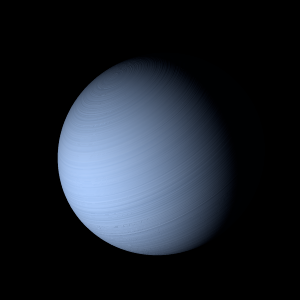|
|
Space Astro
|
Info for exoplanet "Pyakamyu Gu"
| Scientific (actual) data |
|---|
| Planet | KELT-21 b |
| Planet status | Confirmed |
| Planet mass | 3.91 |
| Radius | 1.586 |
| Orbital period | 3.61276 |
| Semi major axis | 0.05224 |
| Inclination | 86.46 |
| Discovered | 2017 |
| Updated | 2017-12-12 |
| Impact parameter | 0.423 |
| Publication | Published in a refereed paper |
| Detection type | Primary Transit |
| Mass detection type | Radial Velocity |
| Radius detection type | Primary Transit |
| Star name | KELT-21 |
| Right ascension | 304.8° |
| Declination | 32.58° |
| Mag v | 10.5 |
| Star distance | 415 |
| Star metallicity | -0.405 |
| Star mass | 1.458 |
| Star radius | 1.638 |
| Star sp type | A8V |
| Star age | 1.6 |
| Star temperature | 7598 |
| Wikipedia article | KELT-21 b |
Back
| |
| Fictional info (?) |
|---|
| Suggested name | Pyakamyu Gu |
| Planet type | Large hot gas giant |
| It is the second-brightest natural object in the night sky after Kamu Pyu, reaching an apparent magnitude of -5 - bright enough to cast shadows at night and, rarely, visible to the naked eye in broad daylight.
Pyakamyu Gu's atmosphere is similar to Kamu Pyu's in its primary composition of ethane and oxygen, but it contains more "ices" such as water, ammonia, and methane, along with traces of other hydrocarbons. The planet is named after the deity Pyakamyu Gu, the god of love and beauty.
As seen from KELT-21, in a frame of reference that rotates with the orbital motion, it appears to rotate only once every two years. |
| Atmosphere | Ethane | 99% |
| Oxygen | 0.057% |
| Atmospheric pressure | 1.4 bar |
 |
| No known satellites |
| Google search for Pyakamyu gu |
|
Website by Joachim Michaelis
|
|
|
|